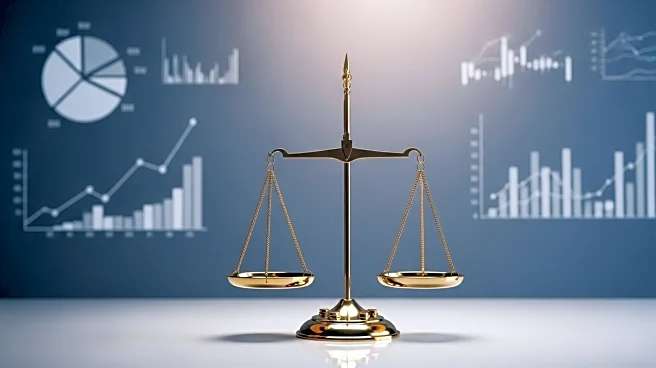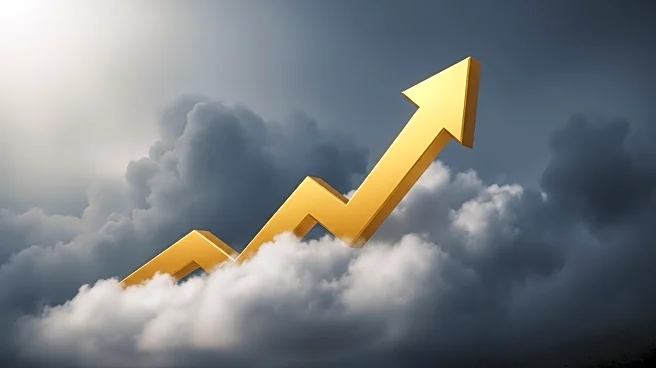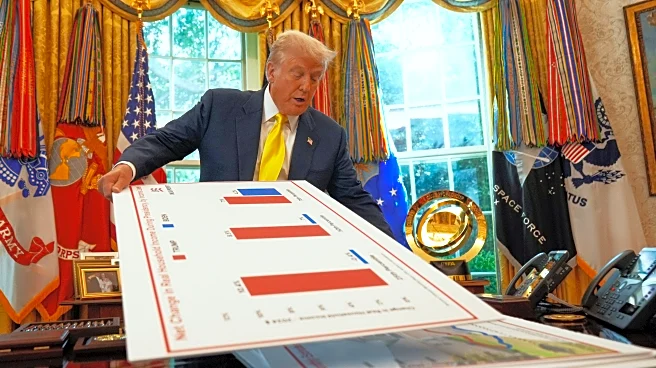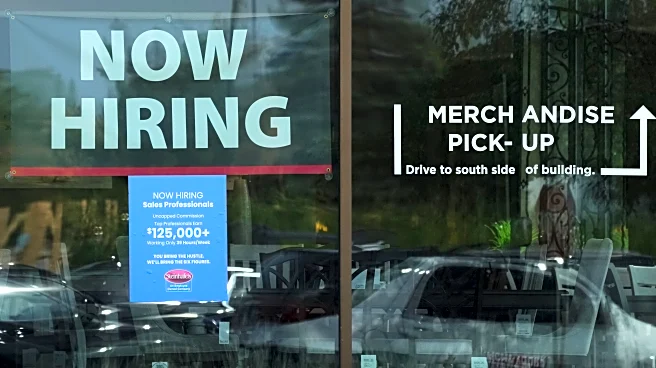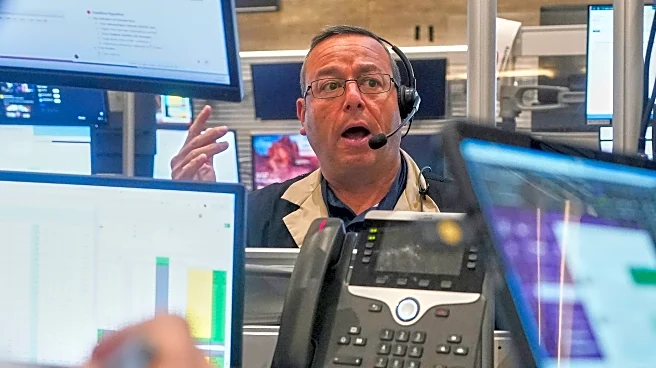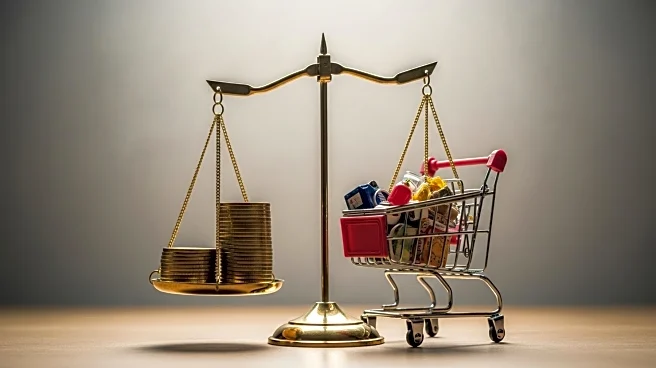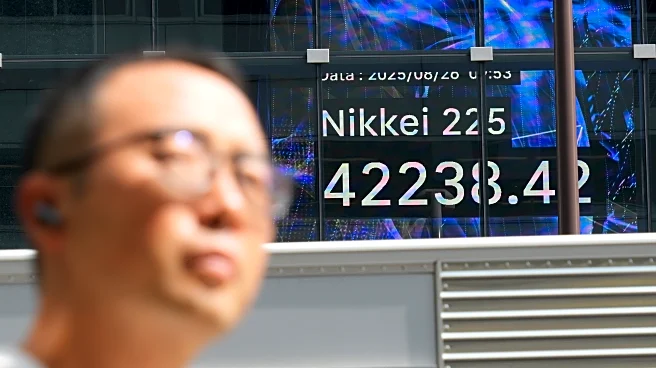What's Happening?
The US economy experienced a stronger rebound in the second quarter than initially reported, according to the Commerce Department's revised estimates. The Gross Domestic Product (GDP) grew at an annualized rate of 3.3% from April through June, up from the previously estimated 3%. This growth was largely driven by increased consumer spending, which accounts for about two-thirds of the US economy, and was revised up to a 1.6% annualized rate. Business investment also saw a significant upward revision, particularly in intellectual property products. Despite these positive indicators, underlying economic momentum appears to be weakening, with expectations of sub-1% GDP growth in the latter half of the year due to a weakening labor market and tariff-induced inflation.
Why It's Important?
The revised GDP figures highlight the resilience of the US economy amid ongoing trade tensions under President Trump's administration. The stronger-than-expected growth may influence economic policy decisions, including potential interest rate adjustments by the Federal Reserve. However, the underlying economic challenges, such as a weakening labor market and inflation pressures, could pose risks to sustained growth. These factors are crucial for policymakers and investors as they navigate the economic landscape and assess future growth prospects.
What's Next?
The Federal Reserve and Wall Street are closely monitoring the labor market for signs of further deterioration, which could impact future economic performance. The average pace of job growth has been notably weak, raising concerns about the sustainability of the current economic rebound. Analysts predict that the economy may face challenges in maintaining its growth trajectory, potentially leading to policy adjustments or interventions to support continued expansion.
